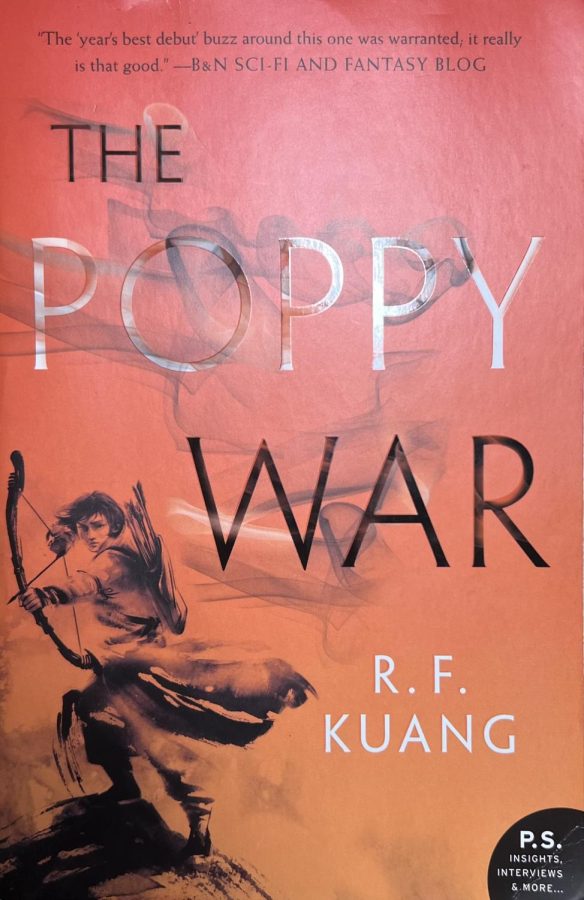The Poppy War
The Poppy War is the first book from The Poppy War trilogy, written by R.F. Kuang. It is highly appraised for its roots in Asian history and accurate portrayals of war.
Fantasy books are highly appraised for their detailed worlds, made of fictional cultures and social hierarchies. While it is entertaining to read novels that feature magic and mystical creatures, books that mirror culture and historical events reveal a richer and deeper understanding of the plot. R.F. Kuang, author of The Poppy War trilogy and Babel, illustrates a fictional world based off of 20th century China, including the captivating mystery of shamanism.
The Poppy War dives into the generational effect of war, drawing inspiration from historical events that have occurred in Asia. The map featured in the novel parallels several fictional nations to modern day countries. The Nikara Empire mirrors China, the Federation of Mugen mirrors Japan, and Speer mirrors Taiwan.
Hesperia is also a region from The Poppy War that is not pictured in the novel’s map. The religion is inspired by Christianity and colonization history, and its roots are similar to the Western Europe.
Kuang focuses on the Third Poppy War, which many speculate to have been based on the Second-Sino Japanese War, a conflict between China and Japan from the years 1937 to 1945.
The novel includes the atrocities committed by the Federation of Mugen, depicting war crimes that China faced by Japanese soldiers. The Rape of Nanking is one of these events that are described in the book. While it is important that Kuang included these for the sake of historical accuracy, her tone does not harbor any bias to either side of the war, adding to the animosity of war and the evils of both sides.
Along with the historical inspiration drawn from Asia, Kuang also focuses on the territorial and cultural differences between many locations to better depict society in Nikan. For example, the capital of Nikan, Sinegard, is the industrialized heart of the empire where the financially wealthy families dwell. On the other hand, there are multiple provinces that are based in the countryside, where farmers and poorer families reside. In these areas, illegal activities such as opium smuggling take place in order to keep their families afloat.
The various locations that were featured in this book seemed to mirror the struggles between Asian countries and territories. For example, the people of Speer are described to have tanned skin as compared to those from Nikan who have pale skin. This comparison is mirrored in the asian diaspora that continues to take place in modern society. Southeast Asians are held to the beauty standards of East Asians, and regarded less highly because of their regional differences in physical appearance.
The main character, Fang Runin, also experiences several instances of harassment due to her origin from the countryside. This is another issue that is focused in Kuang’s book, emphasizing the economic hierarchy in society and its injustice to the less fortunate.
I highly recommend The Poppy War for readers who are interested in a fantasy novel that details historical events from Asian countries. (Please research the trigger warnings prior to reading the book). Along with the enchanting world building, Kuang’s writing is masterful and lyrical, captivating the reader and showing us the beauty and evil of Nikan through Rin’s eyes. While I haven’t read the sequel or finale of the series, I have faith that Kuang’s storytelling will not fail to uphold the reputation that it has established in the first book.

Native to San Diego, Hong-An Phan is a Co- Editor in Chief for Dons Press. After three consecutive years as part of the staff, Hong-An is looking forward...





















































